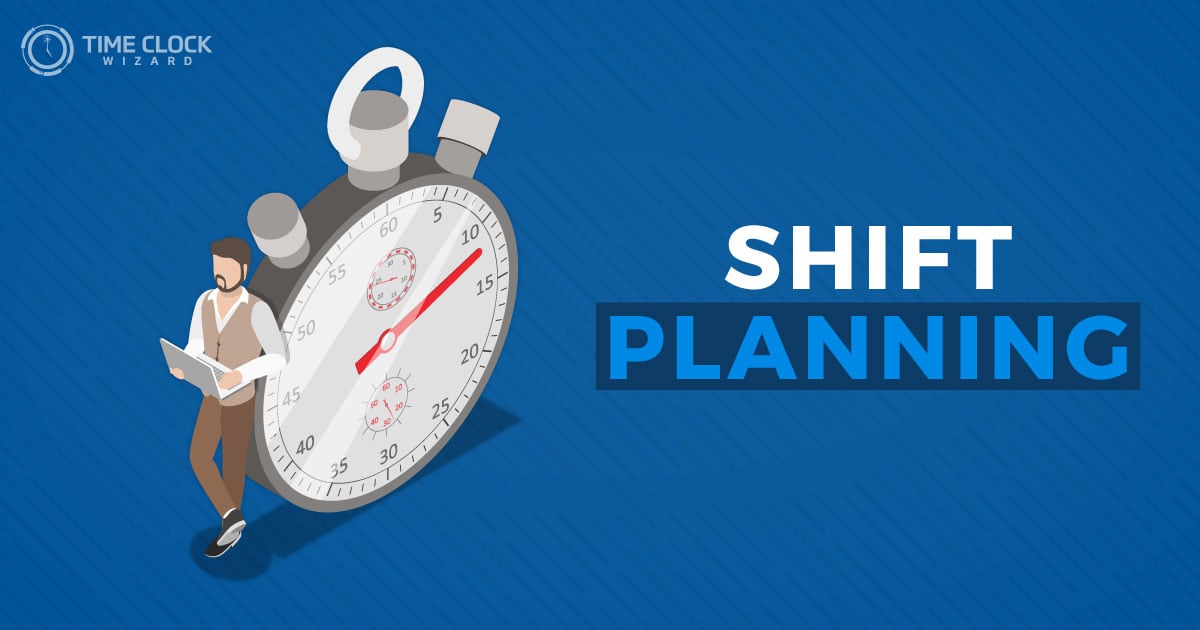
Digital technology has revolutionized shift planning in recent years. Some companies might continue to lag behind, but changing staffing needs are forcing even the most stubborn businesses to reconsider. If your business is suffering the negative of consequences of poor shift planning, then a work schedule app might be your answer.
Scheduling software is no longer the wave of the future. Many companies are using it right now to avoid scheduling snafus and maximize productivity. Not surprisingly, these companies are delighted with the results. Read on to find out how shift planning apps work and what they can do to meet your scheduling needs.
Shift Planning
As managers and HR personnel, you’ve seen the results of staffing mistakes firsthand. You’ve witnessed the delays, poor customer service, and testy employees that occur whenever you’re understaffed. You’ve also seen the ruined budgets and lost profits that ensue when too many people work at one time. There are many reasons behind scheduling mistakes, but the bottom line is that it’s up to you fix them.
And if you’re like most people, you searched for a way to prevent these negative outcomes in the future. Fortunately, you can get started on a solution through a little strategic shift planning. A work schedule app can help you staff your business with pinpoint accuracy. You probably have a decent of what strategic shift planning is, but let’s take a closer look.
The Results of Poor Shift Planning
First, consider the following example to find out what poor shift planning looks like. Imagine a restaurant owner who notices that her labor costs have skyrocketed over the past couple of months. Most likely, she’d investigate her restaurant’s daily operations to find out the causes of the sudden increase in labor.
Eventually, she discovers that it’s a simple matter of overstaffing. Her managers aren’t adjusting the schedule to fit demand and the cooks, dishwashers, and servers end up standing around a lot. Desperate to reduce costs, she immediately pares down the schedule. Unfortunately, she reduces the staff across the board without consulting anyone or analyzing her numbers.
How would all this turn out? Most likely, she’d succeed in reducing labor costs pretty quickly. But other problems would start to pop up immediately. Customers would start to complain about poor service and long wait times. Frustration and burn out would run rampant among her employees. Eventually, sales would dip noticeably and the restaurant’s reputation would start to suffer. And in order to solve these problems, you have to plan for them in advance. A work schedule app can be the solution you are looking for.
Strategic Shift Planning Defined
Now that we’ve seen an example of the damage that poor scheduling can do, let’s look at the solution– strategic shift planning. A strategic shift schedule is one that balances your company’s needs with labor costs to deliver high-quality products and maximum profits. it accomplishes this by aligning the following three scheduling goals:
1. Efficiency. An efficient schedule accounts for several factors of your final deliverable. These include overall production, product quality, delivery speed, and employee turnover.
2. Attractiveness. Essentially, attractiveness has to do with keeping employees happy and optimally productive. In short, an attractive schedule is one that balances employee preference with your company requirements.
3.Effectiveness. An effective schedule is exactly what it sounds like– one that works for a given workplace. What works is different for every company, but an effective schedule is one that contributes to customer satisfaction, high employee morale, and maximum profitability.
Meeting these challenge simultaneously isn’t an easy thing to do. Still, it’s crucial that you keep them in while planning your schedule. Doing so will prevent dissatisfied customer, grumpy employees, and a lot of unnecessary headaches. This might seem daunting at first, but don’t be discouraged. As you’ll see in the next section, the right scheduling software will make this process much easier. Next, we’ll check out other staffing problems that shift planning apps will help you overcome.
Other Shift Planning Problems and How An Employee Scheduling App Can Help
As we said up above, under and overstaffing aren’t the only problems scheduling presents. Here are a few other common dilemmas that scheduling software can help you resolve:
High turnover rates. Unfortunately, most people just don’t like their jobs. A great deal of employee dissatisfaction comes from scheduling problems/ A certain level of turnover is inevitable, but proper scheduling keeps it to a minimum.
Employee Confusion. Chaos ensues when employees aren’t sure when they’re supposed to work. A work schedule app will go a long way toward preventing systematic confusion. It will let managers and employees understand their schedules with a single glance.
Schedule Juggling. Schedule juggling is when managers and employees change the work schedule in ways that are counterproductive. Scheduling software can prevent this from happening by requiring authorization for shift trades and helping managers create their schedules in advance.
Unnecessary Overtime. Poor scheduling can lead to staff shortages that require certain employees to work over. If this happens too much, your labors can really get out of hand. An employee scheduling app will make these shortages easy to spot.
By now, you should have a firm grasp on the causes and the effects of poor scheduling. You should also have an idea of what scheduling software or a work schedule app can do to help. But we’ve only scratched the surface of everything shift planning apps have done to help companies resolve their scheduling problems. You’ve stayed in the problem long enough. Now it’s time to consider some solutions.
Use a Work Schedule App To Fine Tune Your Staffing Practices
Think about what happened in our restaurant example for a moment. The managers were taking a one-size-fits-all to schedule making. Then, the owner makes the exact same mistake. True, her mistake went in the opposite direction, but the root cause was exactly the same as her managers. Either way, the results were predictably bad.
The one-size-fits-all approach to scheduling is actually very common. This holds true in whatever industry you do business in. In fact, a failure to adapt to changing needs is number driver of scheduling mistakes. It’s not the only cause of scheduling problems, but it provides an excellent example of a very common mistake.
And while managing a restaurant is certainly no picnic, think about how much tougher scheduling can be when you’re dealing with dozens or even hundreds of people. In these cases, precision scheduling is absolutely vital. And virtual teams can present even thornier problems. To sum up, scheduling mistakes are a luxury no company can afford.
Choosing the Right Tool
Fortunately, there are tools that can make your life easier. The task now is to find the one that works best for you. The features different platforms offer do vary greatly, however, and the best choice for you depends on your company’s size and needs. Here are five things to look for in software scheduling tools:
1. Scheduling Templates You don’t want to do a total reconstruction every time you make a schedule. Platforms with schedule templates let you create a ‘paradigm schedule’ and make alterations quickly whenever the need arises.
2. Self-Service for Employees Employee self-service (ESS) can make your schedule maker’s work much easier. It accomplishes this by allowing them to request shift changes that require managerial approval. It also lets employees post shifts they want to trade where others (including managers) can view and accept them easily.
3. Options for Group Scheduling The need for group scheduling arises when several employees are assigned to work on a single project. Platforms with group scheduling options let managers create groups and task individual members to work together at pre-established times.
4. Advanced Communication Capabilities Good communication is a must for strategic shift planning. Some platforms facilitate this high-level communication with alerts that are sent to employees and managers whenever schedule changes occur. They also send updates, reminders, and mobile text alerts.
5. Integration with Payroll Systems Some software scheduling tools only function as stand-alone platforms. These might serve the needs of small companies, but larger ones would benwfit greatly from platforms that integrate scheduling with payroll systems. This integration allows you to link your work schedule app with attendance records and export them directly to your payroll system. This saves time and can prevent expensive mistakes.
Turning a Problem Area Into a Strength
Managing people is a tough job, and scheduling can be one of the more challenging parts of it. Great shift planning is something that just doesn’t happen on its own. First, it requires detailed attention. In other words, you have to prioritize scheduling and make it a part of your weekly routine. Then, you have to practice due diligence as time goes on.
The purpose of an employee scheduling app is to automate the scheduling process and maintain proper staffing. Needless to say, the benefits of proper staffing are potentially enormous. Not only will it reduce save time and money, it will also improve your reputation. You’ll become a destination for great employees and grow your client base. This is what great companies do— they turn weaknesses into strengths.
Software platforms that offer simplicity and easy access can be a great help in this regard. Shop around to find the work schedule app that best fits your needs. We’re certain you’ll be happy you did so. More importantly, so will your staff, supervisors, and customers. Scheduling software is a win-win proposition and we hope you give it a test run today.







